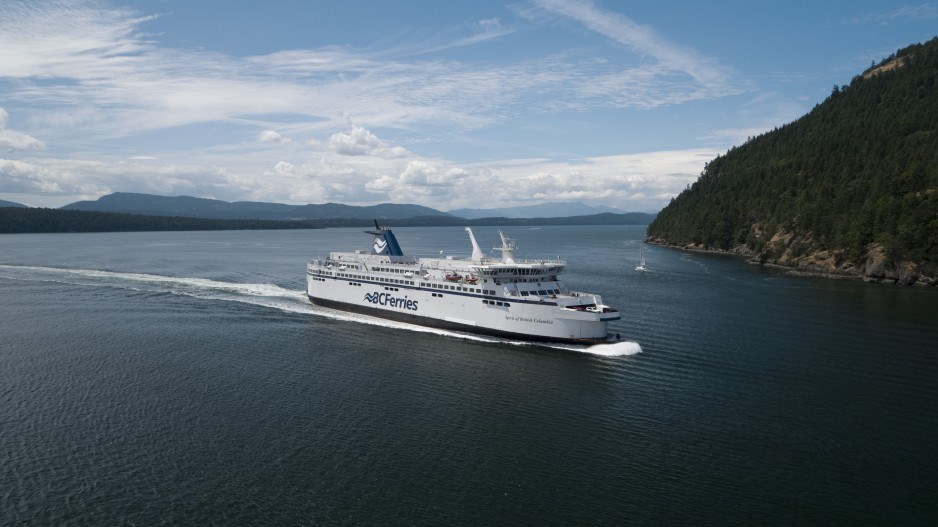This article was originally published in BIV Magazine's Gateway issue.
Consumer demands for cleaner, greener products and processes are making an impact throughout the supply chain. Businesses that do not directly sell to consumers, like the shipping giant A.P. Møller-Mærsk, are facing pressure to go green from customer-facing companies, like Walmart and other large retailers.
Investors are also looking for sustainable businesses, and many institutional investors are increasing their asset allocations in environmentally conscious companies.
This shift in customer and investment sentiment has led to a barrage of press releases from companies and institutions that promote net-zero initiatives and commitments. But what does net zero really mean, and will net-zero commitments lead to a more environmentally friendly supply chain?
The Sierra Club has argued that many corporate net-zero plans are merely public relations-driven pledges that rely on the purchase of carbon credits, and focus less on directly reducing emissions. Jane Lister, a research associate at the University of British Columbia (UBC) and the associate director for the Centre for Transportation Studies, says that focusing on offsets instead of making emissions reductions affects the overall feasibility of achieving the Paris Agreement’s goal of limiting global warming to 1.5 degrees Celsius.
Pressure from investors and consumers is moving things forward, says Lister, but it is also safeguarding the status quo. She emphasizes the need for transformational change to truly make supply chains more environmentally friendly.
“They’re definitely moving in the right direction and they’re addressing things, but they could be more transformative. They’re incremental steps that aren’t meant to change their business at all; actually, they are meant to increase their business,” Lister explains. “We can’t grow and shop our way out of this crisis.”
Globalization and just-in-time inventory systems have made supply chains incredibly complex. A single product can be sourced, manufactured and eventually sold in completely separate regions. Your cellphone most likely contains raw materials mined in Africa, then shipped to Asia to be manufactured into phone parts, then sent to North America to be assembled and eventually sold to people around the world. Each one of these steps often requires carbon-intensive extraction or manufacturing processes, as well as energy required for transportation. Just-in-time inventory systems add another layer of energy consumption because these systems rely on continuous activity.
For some, supply chain complexity makes the attainment of net-zero supply chains wishful thinking.
“It’s very aspirational,” says Werner Antweiler, associate professor at UBC’s Sauder School of Business.
Antweiler says it will be easier for short, regionally contained supply chains to become net-zero. For example, BC Ferries has taken on the initiative to electrify its fleet. But many products require inputs from multiple continents, and net-zero solutions for trans-boundary supply chains are more complex.
The first hurdle, according to Antweiler, is transparency. Many supply chains involve so many players and processes that it becomes difficult to track each stage of a product’s creation and monitor where each producer sources its materials – let alone assess the environmental impacts of international production and extraction processes. In addition to this lack of supply chain transparency, Antweiler says that many aspects of decarbonizing a supply chain lie outside of a company’s control. This includes how the electricity and energy used by a corporation is produced.
Despite challenges, greenwashing concerns and an overreliance on carbon offsets, Bentley Allan, a research fellow for green industrial policy with the Transition Accelerator, says there have been some concrete first steps to truly decarbonize parts of supply chains. In a recent press release, Maersk announced its plans to operate the first carbon-neutral liner vessel by 2023. The Port of Vancouver has also joined with Seattle and Alaska to explore the feasibility of a “green corridor,” which would encourage the use of zero-emission cruise ships.
“There has definitely been some watering down of that term [net zero] across the economy,” says Allan. “But the way these things are currently getting operationalized, they’re really going to mean something and I think that’s going to be the case with green corridors, too.”
British Columbia has an important role to play in decarbonizing global supply chains, and players within the province have already started taking initiative. Not only are B.C.’s ports working to decarbonize, but the province’s large and influential mining industry could help procure critical minerals needed to functionally shift parts of the economy to less carbon-intensive products. Allan says he has been in conversation with a big group of junior minors about developing large deposits with metals needed for batteries, such as nickel and copper.
“The firms are really eager and there’s real opportunity for the Government of British Columbia to take some leadership here and really develop a strategy to be seen as provider of critical minerals the country and the world need as we transition to net zero,” says Allan.
“We have a great talent pool and a real lead in different sectors of the net-zero economy here in Canada, but we could get blown out because we’re just sitting on our hands.”
This article was originally published in BIV Magazine's Gateway issue under the headline 'Greener supply chains.' Check out BIV's full digital magazine archive here.




